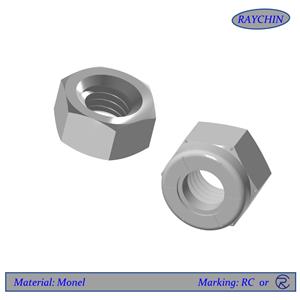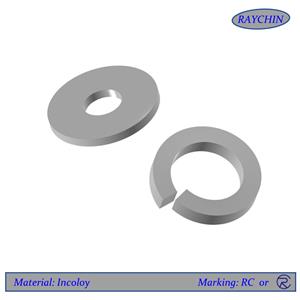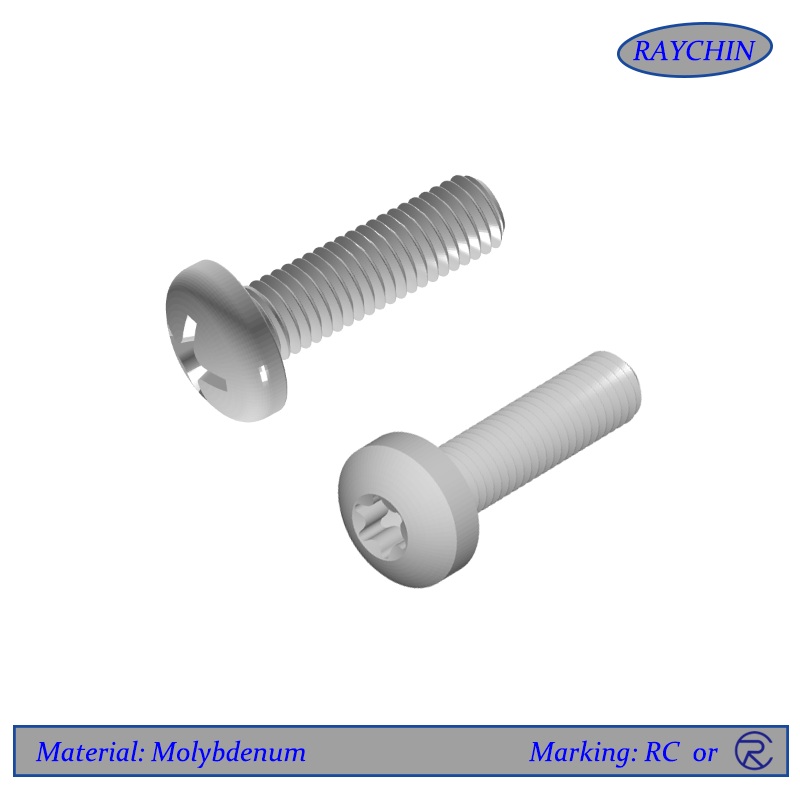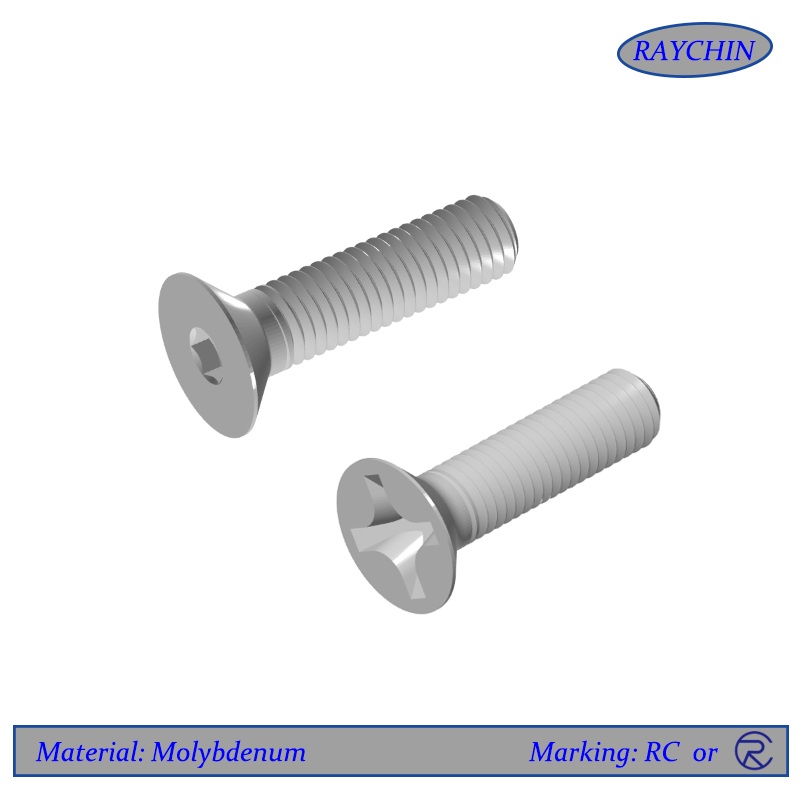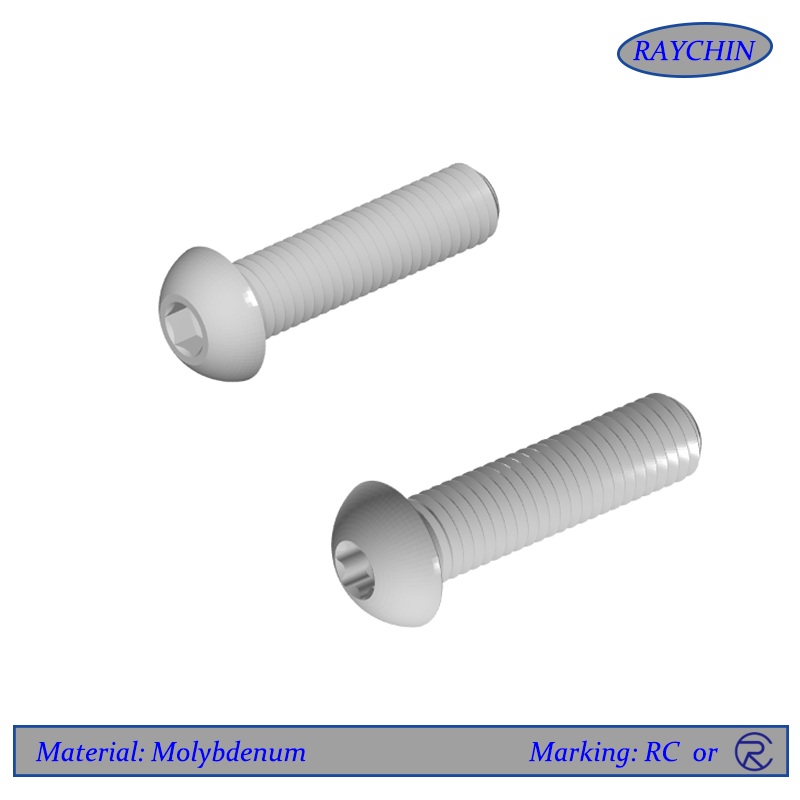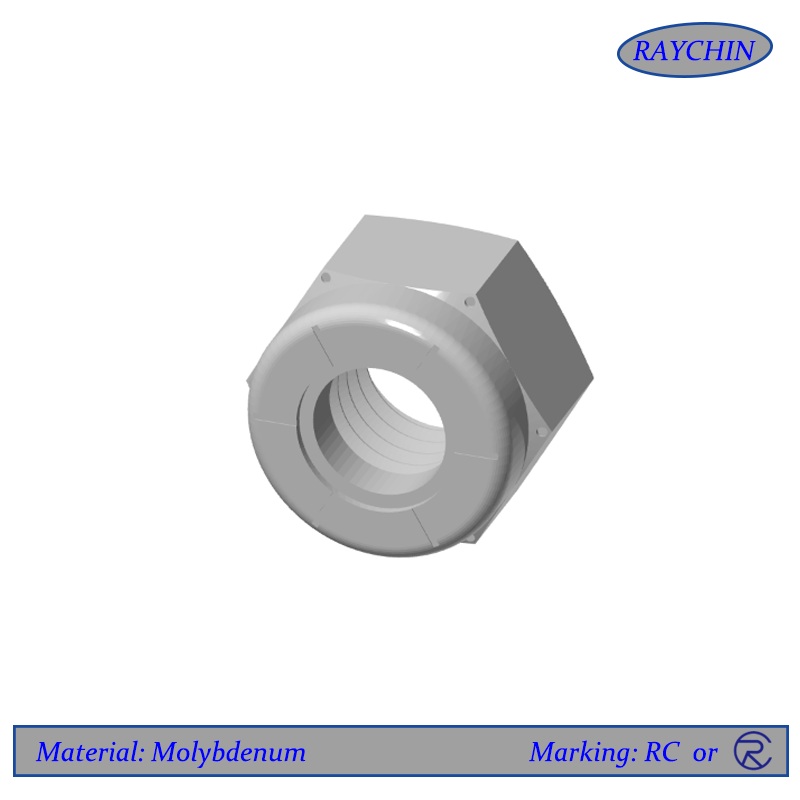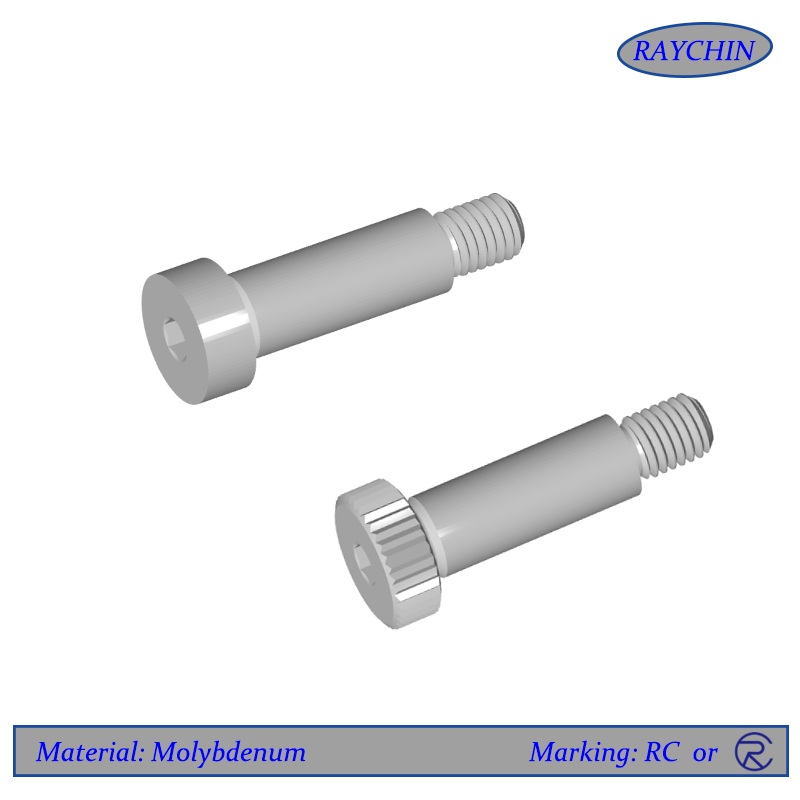-
Molybdenum Set Screws
Molybdenum set screws possess a very high melting point of 2620°C, a low coefficient of thermal expansion and a high level of thermal conductivity. Because molybdenum screws have the ability to withstand extremely high temperatures without changing shape, expanding or softening significantly, they are ideal for high strength / high temperature applications that are shielded from oxygen. Exposing molybdenum set screws to oxygen above 600°C will cause them to readily oxidize.
Send Email Details
As a result, molybdenum set screws find their way into high temperature vacuum furnaces, glass production, military and space applications where oxygen is not present. -
Molybdenum Pan Head Screws
Molybdenum pan head screws possess a very high melting point of 2620°C, a low coefficient of thermal expansion and a high level of thermal conductivity. Because molybdenum screws have the ability to withstand extremely high temperatures without changing shape, expanding or softening significantly, they are ideal for high strength / high temperature applications that are shielded from oxygen. Exposing molybdenum pan head screws to oxygen above 600°C will cause them to readily oxidize.
Send Email Details
As a result, molybdenum pan head screws find their way into high temperature vacuum furnaces, glass production, military and space applications where oxygen is not present. -
Molybdenum Flat Head Screws
Molybdenum flat head screws possess a very high melting point of 2620°C, a low coefficient of thermal expansion and a high level of thermal conductivity. Because molybdenum screws have the ability to withstand extremely high temperatures without changing shape, expanding or softening significantly, they are ideal for high strength / high temperature applications that are shielded from oxygen. Exposing molybdenum flat head screws to oxygen above 600°C will cause them to readily oxidize.
Send Email Details
As a result, molybdenum flat head screws find their way into high temperature vacuum furnaces, glass production, military and space applications where oxygen is not present. -
Molybdenum Button Head Cap Screws
Molybdenum button head cap screws possess a very high melting point of 2620°C, a low coefficient of thermal expansion and a high level of thermal conductivity. Because molybdenum screws have the ability to withstand extremely high temperatures without changing shape, expanding or softening significantly, they are ideal for high strength / high temperature applications that are shielded from oxygen. Exposing molybdenum button head cap screws to oxygen above 600°C will cause them to readily oxidize.
Send Email Details
As a result, molybdenum button head cap screws find their way into high temperature vacuum furnaces, glass production, military and space applications where oxygen is not present. -
Molybdenum Lock Nuts
Molybdenum lock nuts possesses a very high melting point of 2620°C, a low coefficient of thermal expansion and a high level of thermal conductivity. Because molybdenum nuts have the ability to withstand extremely high temperatures without changing shape, expanding or softening significantly, they are ideal for high strength / high temperature applications that are shielded from oxygen. Exposing molybdenum fastener to oxygen above 600°C will cause them to readily oxidize.
Send Email Details
As a result, molybdenum lock nuts find their way into high temperature vacuum furnaces, glass production, military and space applications where oxygen is not present. -
Molybdenum Shoulder Bolts
Molybdenum shoulder bolts possesses a very high melting point of 2620°C, a low coefficient of thermal expansion and a high level of thermal conductivity. Because molybdenum bolts have the ability to withstand extremely high temperatures without changing shape, expanding or softening significantly, they are ideal for high strength / high temperature applications that are shielded from oxygen. Exposing molybdenum fasteners to oxygen above 600°C will cause them to readily oxidize.
Send Email Details
As a result, molybdenum shoulder bolts find their way into high temperature vacuum furnaces, glass production, military and space applications where oxygen is not present.


